If your ROAS is slipping and your first move is to pump more budget into Google or Meta, you’re skipping the part that actually controls performance.
The real lever isn’t the budget. It’s the data. Your feed tells platforms what to serve, how to group products, and where to apply your bids. If that data’s flat or misstructured, throwing money at the problem just accelerates waste.
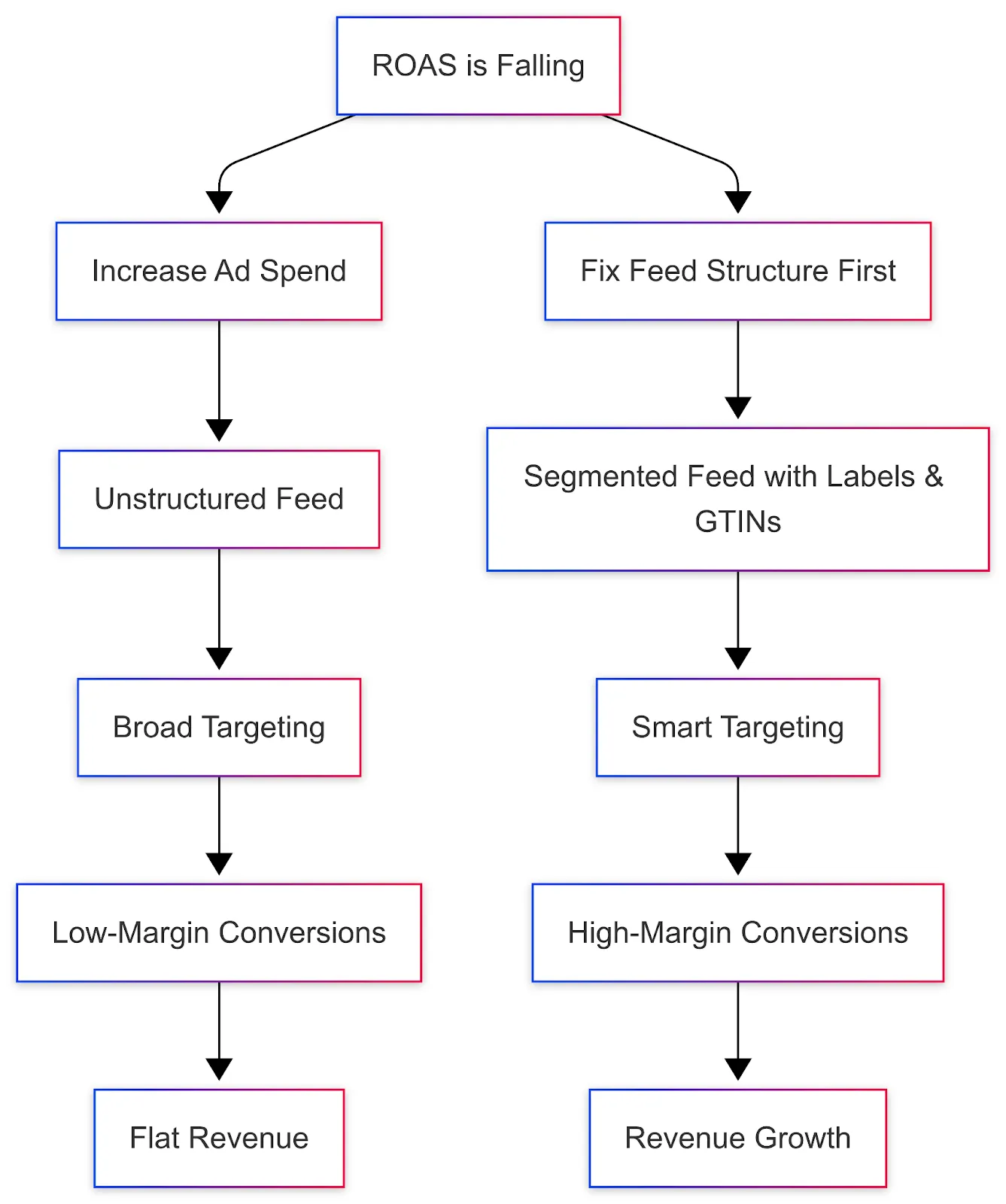
More Budget Just Multiplies Bad Feed Logic
We’ve all been there. The campaign hits a ceiling, so someone bumps the spend to try and push past it.
But if your feed isn’t structured to support segmentation—clean product_type, strategic custom labels, complete GTINs—platforms like Google PMax and Meta ASC can’t make smart decisions. So they default to broad logic. And that logic usually favors volume, not value.
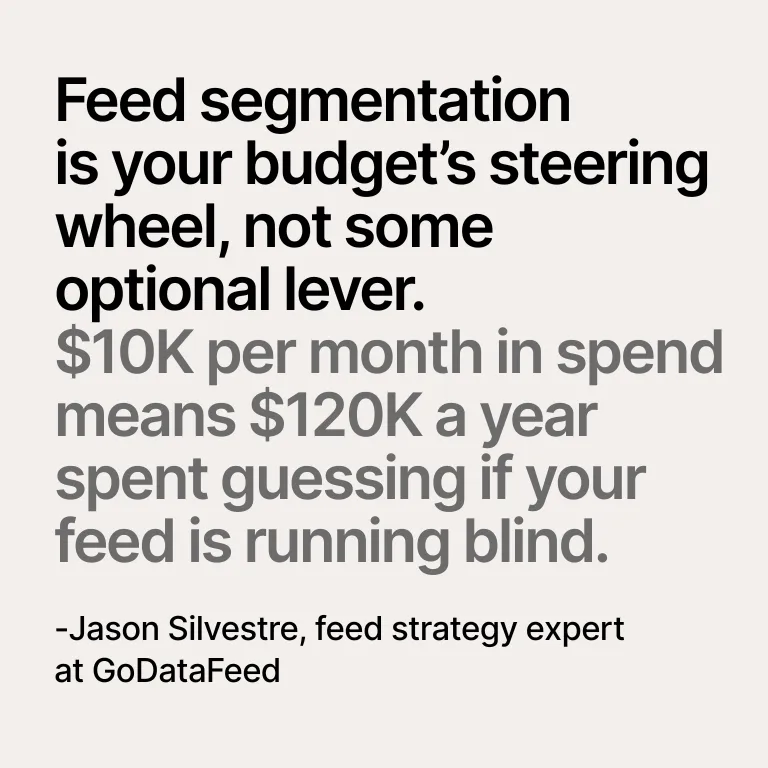
More budget means more impressions—but for the wrong products, at the wrong bids.
The Wrong Product is Winning the Auction
We saw this happen inside a PMax account for a fashion retailer. Their bestsellers—$150+ jackets—were in the same asset group as last-season discount tees. No segmentation. Just a flat “Apparel” label across the board.
So Smart Bidding did what it does: chase conversions. And it found them on the cheap SKUs. ROAS looked fine—until you realized revenue was flat and high-margin inventory was barely moving.
PMax doesn’t care about your margin. It cares about conversion probability. If you don’t isolate high-value SKUs with custom labels or structured product_type, they get lost in the noise.

Fix it upstream:
- In GoDataFeed, break product_type into actual hierarchy: Apparel > Women’s > Outerwear > Jackets.
- Add custom labels for margin tiers: High-Margin, Core, Clearance.
- Use those labels to map asset groups that align bidding logic with business value.
And don’t guess how your rules affect output—preview it. GoDataFeed’s Rule Preview lets you test the result of label logic, suppressions, or title edits in real time—so you can scale clean feed segmentation with confidence.
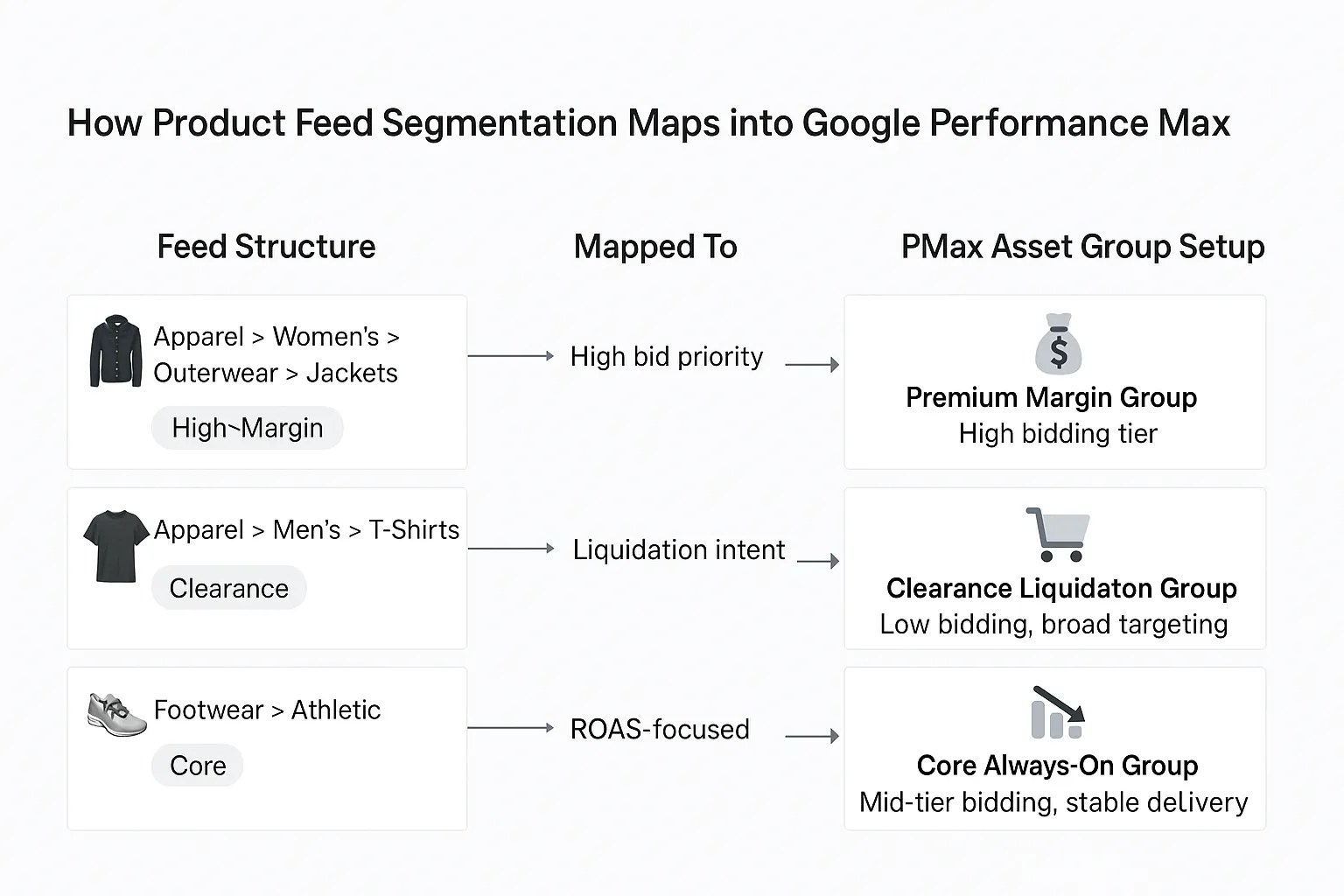
“Approved” Isn’t the Same as “Eligible”
Here’s where a lot of feeds go sideways.
You check Merchant Center—everything’s green. No errors. But your impressions are flat, or worse, declining.
That’s because approval is just step one. What actually controls visibility are silent eligibility signals—things you won’t catch unless you’re actively auditing against feed optimization best practices.
If your GTINs are malformed (missing leading zeros, UPCs instead of EANs), you get throttled. If you’re using old Google Product Categories, you show up in irrelevant auctions—or not at all.
Google won’t block you. It’ll just quietly limit your reach.
What to check:
- GTINs present and correctly formatted
- Categories mapped to current Google taxonomy
- Hidden warnings in diagnostics (especially under “Limited performance due to missing identifiers”)
Then fix it with GoDataFeed:
- Auto-validate GTIN formats
- Sync your category mappings with the latest taxonomy
- Use supplemental feeds to backfill missing attributes without touching your core catalog.
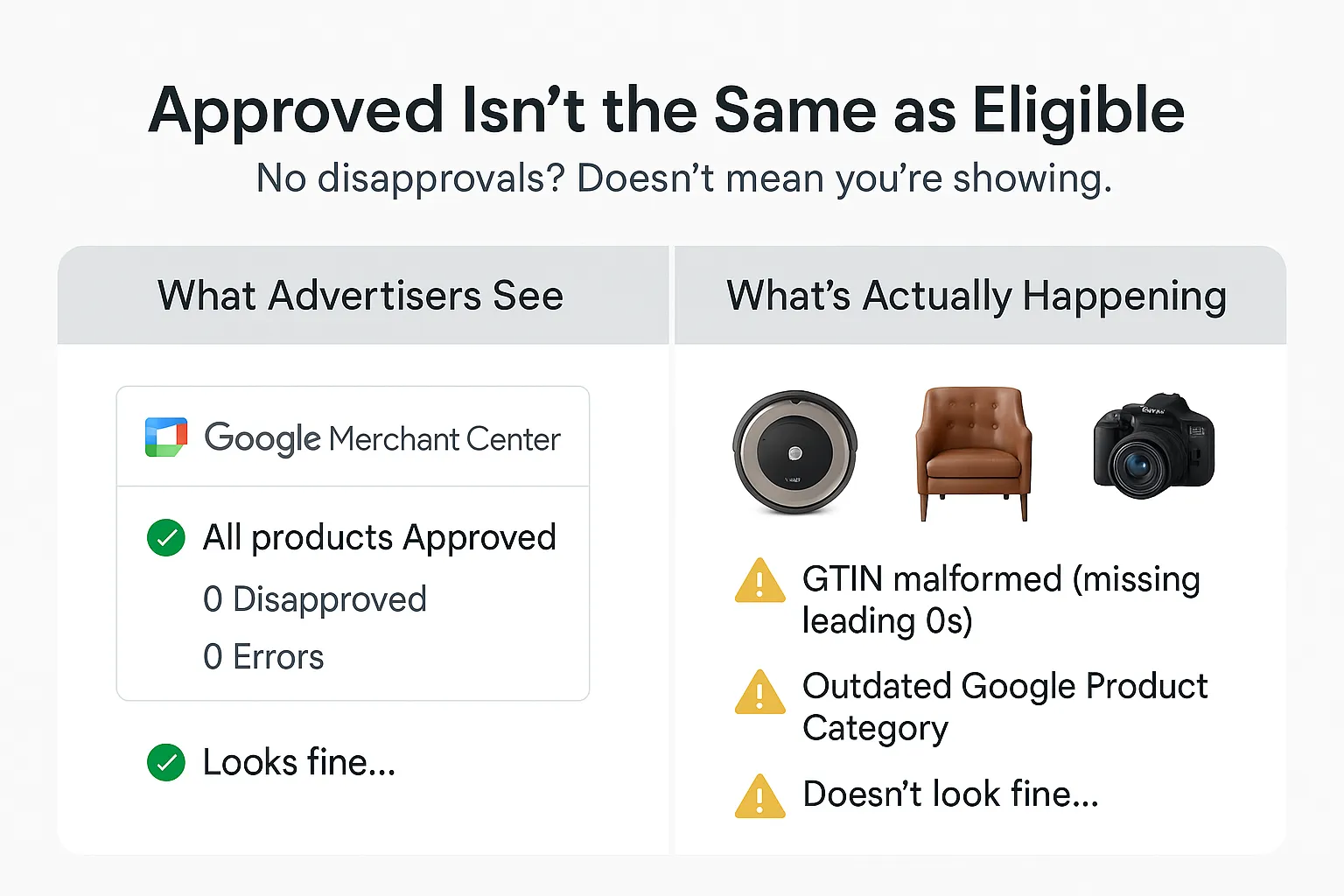
Meta’s Variant Logic Will Wreck Your ROAS if You’re Not Careful
On Meta, if your variant data isn’t clean—titles, sizes, images, item_group_id—it suppresses everything but one variant.
And it won’t pick your hero SKU. It’ll grab whatever’s available and call it a day.
Usually, it’s not even in stock.

One DTC apparel brand we worked with had 12 variants per SKU. Meta picked a size/color combo that wasn’t even in stock. The rest never delivered.
Fix it before you scale:
- Append size and color to variant titles
- Ensure every variant has its own image_link and correct item_group_id
- Use GoDataFeed rules to normalize this at scale, especially across large catalogs or multiple brands
If your feed rules aren’t syncing with the platform, you’re flying blind. Start by connecting your Google Merchant Center to GoDataFeed so the fixes you make—like variant cleanup—actually carry through.
Because if your variants aren’t clean, Meta guesses. That’s why you need to review item_group_id and variant attributes first—here’s how setting up product variations correctly looks in practice. And its guess is rarely what you’d choose.

Campaigns Fail When Feeds Don’t Segment
Campaign structure is only as smart as the data behind it.
If your feed lumps everything together—no custom labels, no structured categories, no lifecycle tagging—then PMax and ASC don’t know how to allocate spend. They’ll just optimize toward click volume. That’s how you end up overspending on products that barely move the needle.
Your campaigns aren’t broken. They’re running blind.
[Feeds aren’t inputs—they’re infrastructure. The Feed Is the Strategy shows how campaign logic hinges on feed structure.]

What to do: Use GoDataFeed to create label logic that maps directly to campaign strategy:
- Margin tier (High, Medium, Low)
- Inventory status (In Stock, Backorder)
- Lifecycle (New Arrival, Evergreen, Clearance)
Then tie those labels into campaign segmentation or asset group mapping. That’s how you steer the budget with intent.
Want to group by SKU sets across rules or brands? Use Lists to build reusable segments that support rule logic, lifecycle targeting, and high-margin SKU isolation.
Your Pre-Scale Checklist (Use This Before Touching Budget)
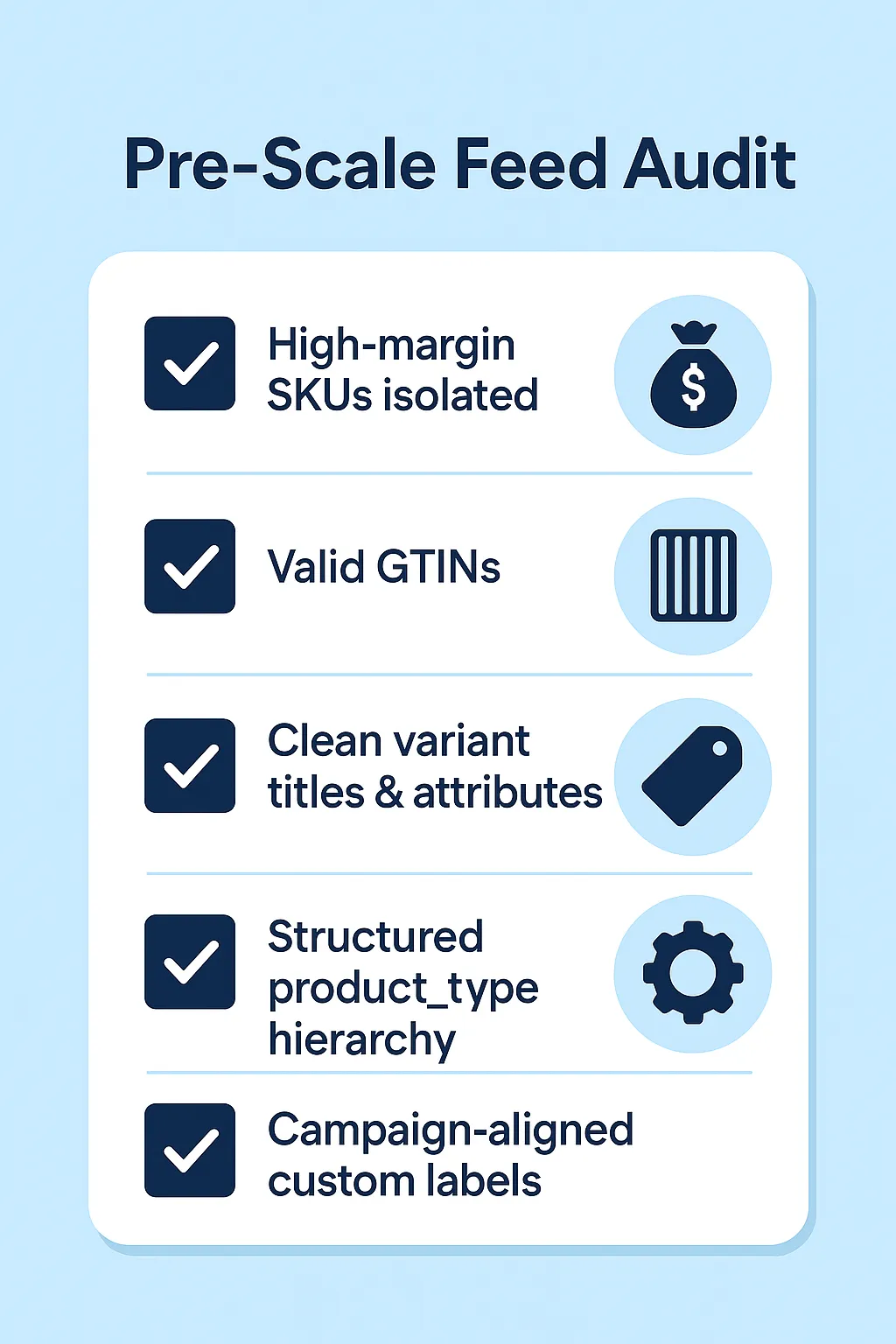
Before you increase spend, audit your feed. These are the five things to check:
- Are high-margin SKUs isolated by label or product_type?
- Are GTINs valid and formatted correctly?
- Are variant titles, images, and attributes clean and consistent?
- Is product_type structured deeply enough for asset group logic?
- Do custom labels align with campaign bidding priorities?
If any of those are a no, fix them first. Otherwise, scaling budget just scales inefficiency.
Set this up as a monthly SOP. Use GoDataFeed’s rule log and feed audit tools to track changes and flag slippage before it affects campaign performance.
And make sure your feed submission method (like Feed Pull URL submission or submit feeds via SFTP) is stable and synced to your update cadence.
Bottom Line: Don’t Pay to Guess
Messy feed, messy spend.
Platforms don’t care about your margins—they just follow signals. And if your signals are off, your ROAS will be too.
A clean, segmented, strategically structured feed gives you control. Over what gets seen. Over how it’s grouped. Over where your dollars actually go.
Fix the feed. Then scale.
Follow the steps outlined in this article or reach out to us if you need help.
Most performance issues blamed on budget or bidding are really rooted in poor data structure. This is the part most teams overlook—not because it’s hard, but because it’s invisible until it’s expensive. Don’t wait for performance to slip before checking your feed. Build that audit muscle into your monthly workflow now—and scale with confidence later.
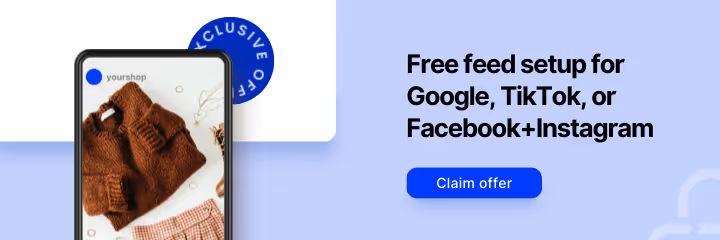





%20).webp)